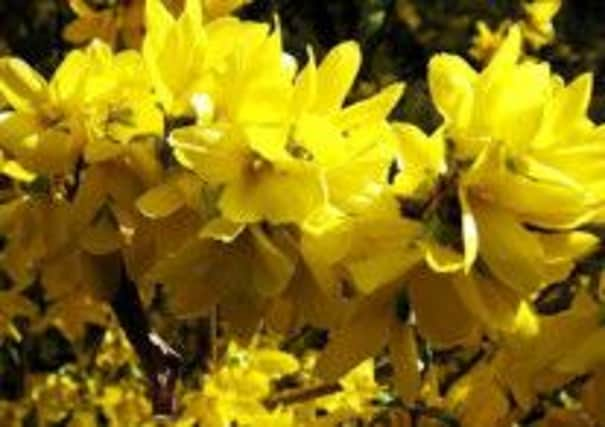Spring role for Chinese staple


A vigorous, strongly upright, deciduous shrub – or should that be a pain in the garden? Whichever way you look at it, you have to admit that for a couple of weeks every year, there is no escaping forsythia. It is one of the sights of spring when its blooms explode into colour on leafless branches.
The problems with forsythia are that it has no real staying power in the flowering stakes and it is so “common” that many gardeners take it for granted and even consider it as a bit of a nuisance. But they should look a little deeper...
Advertisement
Hide AdAdvertisement
Hide AdTraditionally considered a herald of spring, forsythia is said to be a symbol of a good nature, innocence, and anticipation. Korean legend states that this flower depicts the rejuvenation of love.
And even if you don’t put any stock in symbols and legends, you should be cheered by the sight of the yellow blooms which appear for a few weeks every spring.
Forsythia was introduced here in the 19th-century from Japan by William Forsyth, a Scottish botanist and a founding member of the Royal Horticultural Society. But forsythia didn’t really take off on these shores until Robert Fortune introduced the British to the Chinese species, Forsythia fortune.
Forsythia is a great choice for a container garden. The plant needs very little care and is unbelievably hardy. It will also faithfully produce those bright golden, bell-shaped flowers on bare branches in the spring. And then, when the flowers fade, green foliage appears and lasts throughout summer and autumn.
Advertisement
Hide AdAdvertisement
Hide AdUnfortunately, a lot of forsythia plants are left to their own devices to grow wild and free. They can become untidy, unruly and unattractive; keep a forsythia under control, even trained up a trellis, and it will not disappoint.
Plant a specimen in sun or partial shade, ideally in moist but well-drained soil, although the plants are not very fussy and will grow just about anywhere where the soil isn’t waterlogged.
For the best blooms, prune the branches that have flowered back to a pair of strong buds just after they have finished blooming.
To propagate forsythia, just pull off a bit of stem and stick it in the soil – nine times out of 10 it will root and grow without any encouragement from the gardener.